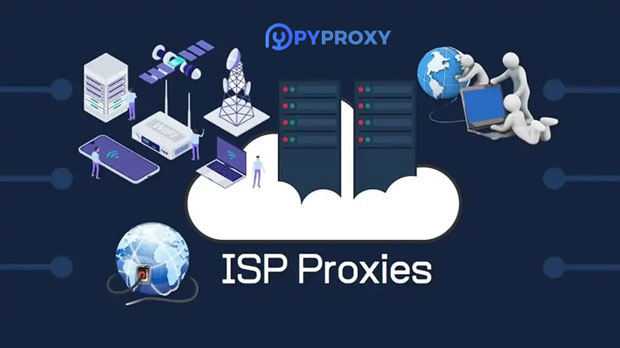Is SOCKS5 proxy software suitable for large-scale data scraping?
In today's digital age, web scraping has become an important means for many enterprises and researchers to obtain important information. Whether it's competitive intelligence analysis, market research, or academic research, the demand for large-scale data capture is increasing day by day. In this process, the role of the proxy server is crucial. As an efficient proxy technology, socks5 proxy is widely used in Internet access control, anonymity protection, data capture and other fields. However, whether it is suitable for large-scale data capture is a question that requires further exploration. We will analyze the advantages and disadvantages of SOCKS5 proxy from multiple perspectives and evaluate its potential for application in large-scale data scrapingI. Overview of SOCKS5 Proxy Fundamentals SOCKS5 (Socket Secure version 5) is a proxy protocol typically used to forward client network requests to a target server through an intermediary server. Compared to HTTP and HTTPS proxies, SOCKS5 proxy is more flexible as it not only supports TCP protocol but also handles UDP traffic, thus providing proxy services for various applications. SOCKS5 proxy is commonly used in scenarios such as providing anonymous browsing, bypassing geographical restrictions, protecting privacy, and hiding real IP addresses during data scrapingCompared to traditional HTTP proxies, socks5 proxies do not parse and modify packets, which means they can handle any type of traffic (such as P2P protocols, video streams, instant messaging, etc.), making them more stable and efficient in complex network applicationsII. The Relationship between SOCKS5 Proxy and Data CaptureThe use of proxies is crucial in large-scale data capture. Web crawlers often need to frequently extract data from multiple websites, and if a single IP address is used, it is easy to encounter bans or restrictions from the target website. By using proxies, especially SOCKS5 proxies, it is possible to help crawlers conceal their identities, avoid IP bans, and ensure the smooth progress of crawling tasks. The following will further analyze the specific application of SOCKS5 proxy in data captureIII. Advantages of SOCKS5 Proxy1. High anonymity and privacy protectionOne of the biggest advantages of SOCKS5 proxy is its high degree of anonymity. Hiding the real IP address during data capture is crucial to prevent the target website from detecting abnormal access patterns. Unlike traditional HTTP proxies, SOCKS5 proxies are only responsible for forwarding data and do not modify or review the content of the data, thus effectively avoiding the target server from recognizing the real IP address through the proxy's request source. In this way, using SOCKS5 proxy can greatly reduce the risk of being banned2. Support various protocols and data typesSOCKS5 proxy not only supports TCP protocol, but also UDP protocol, which enables it to handle more diverse network requests. In large-scale data scraping, it may involve access to multiple protocols such as HTTP, HTTPS, FTP, P2P, etc. The protocol compatibility of SOCKS5 proxy makes it an ideal choice. Whether it's crawling web data, downloading files, or capturing video streams, SOCKS5 proxy can maintain high flexibility3. Bypass geographical location restrictionsSOCKS5 proxy is often used to bypass geographical location restrictions and access websites that are geographically blocked. When conducting large-scale data scraping on a global scale, crawlers may need to extract data from websites in different countries or regions. By changing the geographic location of proxy servers, crawlers can simulate network requests from different regions, thereby avoiding IP blocking and access restrictions4. Lower latency and higher speedCompared to HTTP proxies, SOCKS5 proxies do not perform data parsing during data transmission, and typically have faster forwarding speeds and lower latency. In large-scale data capture, the speed and efficiency of data capture directly affect the total amount and quality of data collection. SOCKS5 proxy can provide smoother network connections for high-frequency crawling, especially when dealing with a large number of requests, showing better stabilityIV. Shortcomings of SOCKS5 Proxy1. High cost socks5 proxy servers are usually more expensive than regular HTTP proxy servers, especially when multiple proxy nodes are required to handle large-scale crawling tasks. Large scale data scraping requires a large number of proxy IPs, and the cost of these proxy IPs may significantly increase, especially for high-quality proxy servers that require high anonymity and stability. Therefore, the cost of using SOCKS5 proxy for large-scale data scraping may be high and needs to be balanced according to actual needs2. Difficulty in managing proxy resourcesAs the scale of crawling expands, managing a large amount of SOCKS5 proxy resources may become a challenge. Especially in scenarios that require frequent replacement of proxy IP or distributed crawling, the management of proxy pools will become complex. The expiration, failure, and unstable speed of agents can affect the smooth progress of crawling tasks. Therefore, how to effectively manage and maintain SOCKS5 proxy pools is an issue that cannot be ignored in large-scale data scraping processes3. May encounter detection from certain websitesAlthough SOCKS5 proxy provides good anonymity, some target websites may identify proxy traffic through advanced detection mechanisms, especially when a large number of IP addresses are accessing the same website simultaneously. The website may use technologies such as behavior analysis, device fingerprint recognition, and deep packet analysis to detect the use of proxies and subsequently block these IPs. Therefore, although SOCKS5 proxy has a certain degree of concealment, it is not foolproof4. Not all service providers provide high-quality agentsThe companies providing SOCKS5 proxy services in the market are of varying quality. Some service providers have poor SOCKS5 proxy quality, which may have issues such as slow speed, poor stability, and frequent disconnections. It is crucial to choose a reliable and stable SOCKS5 proxy service provider to ensure the efficiency of large-scale data captureV. Application Scenarios of SOCKS5 Proxy in Large Scale Data CaptureAlthough SOCKS5 proxy has certain shortcomings, it is still the best choice for large-scale data scraping in certain specific scenarios. Here are several typical application scenarios:1. Competitive intelligence gatheringFor companies that need to monitor competitor websites, data scraping often requires frequent and bulk extraction of information from the target website. By using SOCKS5 proxy, it is possible to simulate IP addresses from different geographical locations accessing the target website, avoiding IP blocking and effectively protecting the real identity of the crawler2. E-commerce data captureIn the field of e-commerce, capturing product prices, inventory, reviews, and other information is an important component of market research, pricing strategies, and inventory management. Due to the fact that e-commerce platforms often block frequently accessed IPs, SOCKS5 proxies can help crawlers hide their real IPs, bypass the ban, and ensure the smooth completion of data crawling tasks3. Social media data capturePublic data such as user information, posts, comments, etc. on social media platforms are also common targets for large-scale data scraping. Due to strict monitoring measures for frequently accessed IPs on these platforms, using SOCKS5 proxies for distributed data scraping can effectively reduce the risk of detection4. Academic research and data analysisWhen conducting large-scale academic research, researchers typically need to gather a large amount of publicly available academic articles, experimental data, or information from other fields. SOCKS5 proxy ensures that researchers can bypass website access restrictions and anonymously crawl data without being bannedSixth, how to improve the effectiveness of SOCKS5 proxy in data scrapingIn order to improve the application effectiveness of SOCKS5 proxy in large-scale data scraping, crawlers can take the following measures:1. Proxy Pool ManagementReasonable management of proxy pools is the key to ensuring capture efficiency. By using automated tools to regularly replace proxy IPs and monitor their status, it is possible to minimize capture interruptions caused by proxy IP failures or bans2. Distributed crawlingIn large-scale data scraping tasks, using a distributed crawler architecture can better utilize multiple proxy IPs, distribute request pressure, and reduce the risk of a single IP being blocked3. Simulate human behaviorBy simulating human user access behavior (such as setting random time intervals, simulating mouse clicks, page scrolling, etc.), the risk of crawler traffic being identified as machine access can be effectively reduced4. Choose a high-quality proxy service providerIt is crucial to choose a service provider that provides stable, reliable, and high-quality SOCKS5 proxies. High quality proxy service providers typically provide more IP addresses, faster connection speeds, and better technical support7. ConclusionSOCKS5 proxy software can be used for large-scale data scraping, but its applicability depends on several factors. Firstly, the SOCKS5 protocol itself has high anonymity and flexibility, which can hide real IP addresses and help avoid IP blocking and restrictions, which is particularly important for large-scale crawling. Secondly, SOCKS5 proxy supports multiple protocols and can handle complex network requests, making it suitable for capturing different types of data. When using SOCKS5 proxy for data scraping, free proxy often has issues such as bandwidth limitations and poor stability, which may affect the efficiency of data scraping. To ensure the smooth progress of the crawling task, it is recommended to choose a high-quality paid SOCKS5 proxy that can provide faster connection speed and higher stability. In addition, attention should be paid to the selection of proxies during the crawling process to avoid using too many proxies with the same IP segment, in order to avoid being recognized and blocked by anti crawler mechanisms. In summary, SOCKS5 proxy software has certain advantages in large-scale data capture, but it requires careful selection of suitable proxy services to ensure efficient execution of capture tasks
2025-01-06

























































